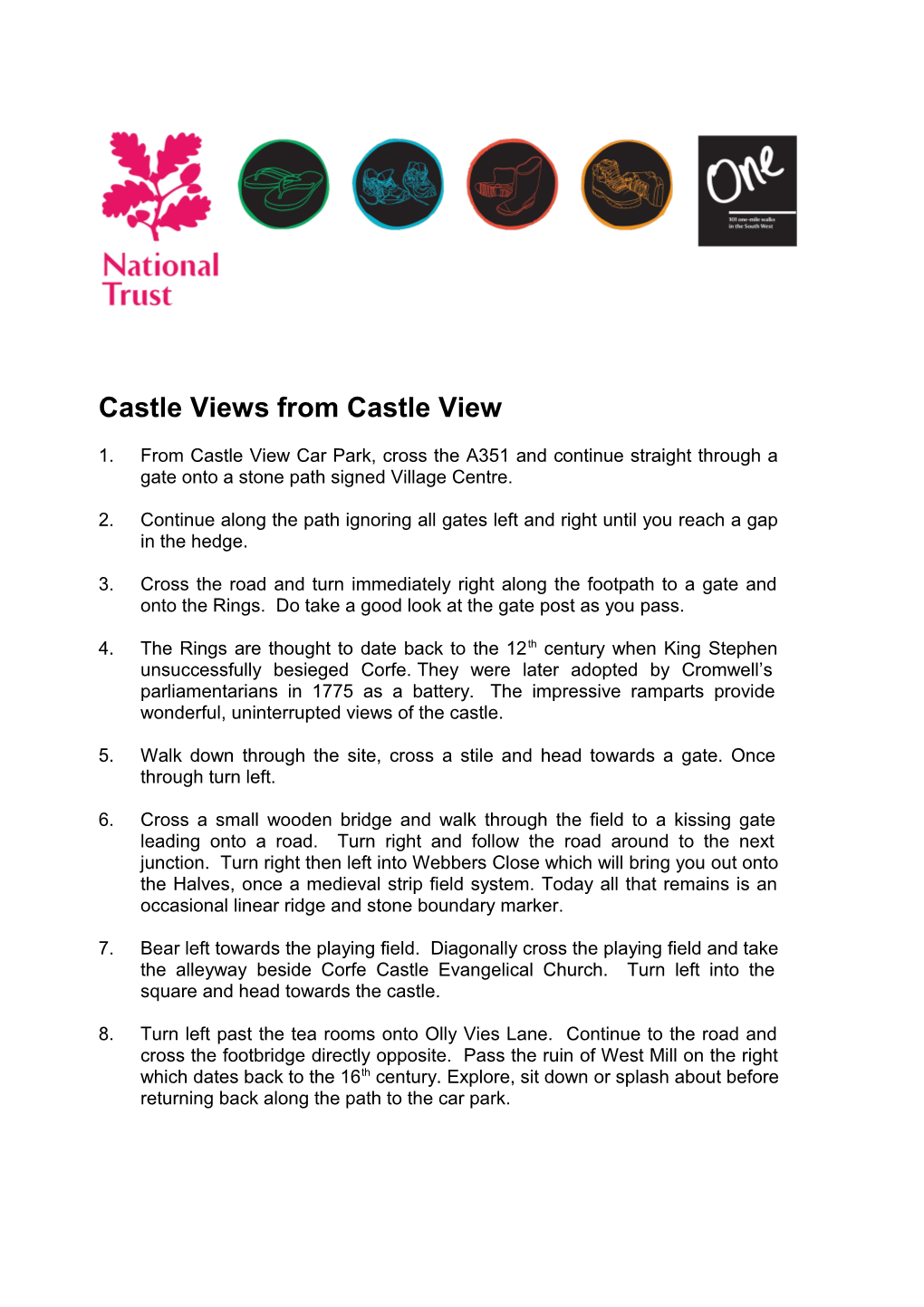Castle Views from Castle View
- From Castle View Car Park, cross the A351 and continue straight through a gate onto a stone path signed Village Centre.
- Continue along the path ignoring all gates left and right until you reach a gap in the hedge.
- Cross the road and turn immediately right along the footpath to a gate and onto the Rings. Do take a good look at the gate post as you pass.
- The Rings are thought to date back to the 12th century when King Stephen unsuccessfully besieged Corfe.They were later adopted by Cromwell’s parliamentarians in 1775 as a battery. The impressive ramparts provide wonderful, uninterrupted views of the castle.
- Walk down through the site, cross a stile and head towards a gate. Once through turn left.
- Cross a small wooden bridge and walk through the field to a kissing gate leading onto a road. Turn right and follow the road around to the next junction. Turn right then left into Webbers Close which will bring you out onto the Halves, once a medieval strip field system. Today all that remains is an occasional linear ridge and stone boundary marker.
- Bear left towards the playing field. Diagonally cross the playing field and take the alleyway beside CorfeCastleEvangelicalChurch. Turn left into the square and head towards the castle.
- Turn left past the tea rooms onto Olly Vies Lane. Continue to the road and cross the footbridge directly opposite. Pass the ruin of West Mill on the right which dates back to the 16th century. Explore, sit down or splash about before returning back along the path to the car park.
Features
Apples and Wildlife
The apple trees growing in the orchards here are mostly varieties of Somerset cider apples. They are used, along with apples from Barrington Court, Glastonbury Tor and Montacute House, to make apple juice. The orchard provides historic and wildlife value, in particular for the mistletoe and the rare moths and insects that live here.
Drove Ways
This section of the walk at the Halves was once part of a ‘drove’ which was used to move livestock between the common field systems of Tintinhull during the medieval period. Today, parallel ridges and furrows on the surface of modern fields indicate medieval farming techniques when droves were in use.
Major droving routes were used to move livestock across long distances to local and regional markets. Pubs and inns which once stood on old drove ways may still carry the ‘Drovers’ name.
A Charming House
Tintinhull House and Gardens can be found at the end of your walk. The house was built in 1630 for the Napper family, who rose in prominence during the 16th, 17th and 18th centuries. The family were closely associated with the local glove making industry and as their wealth grew, they bought up a number of local properties including Tintinhull Court and the Dower House.
The house is surrounded by a contemporary garden. Established within the original plan but mostly created by Phyllis Reiss 1933-1961, the garden perfectly complements the mellow ham stone and well judged proportions of the house.
